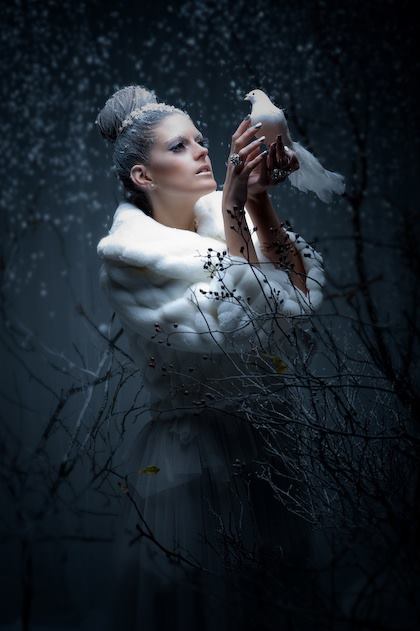
The Pagan holiday called Yule takes place on the day of the winter solstice, around December 21 in the northern hemisphere (below the equator, the winter solstice falls around June 21). On that day (or close to it), an amazing thing happens in the sky. The earth’s axis tilts away from the sun in the Northern Hemisphere, and the sun reaches its greatest distance from the equatorial plane.
Many cultures have winter festivals that are in fact celebrations of light.
In addition to Christmas, there’s Hanukkah with its brightly lit menorahs, Kwanzaa candles, and any number of other holidays. As a festival of the Sun, the most important part of any Yule celebration is light — candles, bonfires, and more. Let’s take a look at some of the history behind this celebration, and the many customs and traditions that have emerged at the time of the winter solstice, all around the world.
ORIGINS OF YULE
In the Northern hemisphere, the winter solstice has been celebrated for millennia. The Norse peoples viewed it as a time for much feasting, merrymaking, and, if the Icelandic sagas are to be believed, a time of sacrifice as well. Traditional customs such as the Yule log, the decorated tree, and wassailing can all be traced back to Norse origins.
The Celts of the British Isles celebrated midwinter as well. Although little is known about the specifics of what they did, many traditions persist.
According to the writings of Pliny the Elder, this is the time of year in which Druid priests sacrificed a white bull and gathered mistletoe in celebration.
The editors over at Huffington Post remind us that “until the 16th century, the winter months were a time of famine in northern Europe. Most cattle were slaughtered so that they wouldn’t have to be fed during the winter, making the solstice a time when fresh meat was plentiful.
Most celebrations of the winter solstice in Europe involved merriment and feasting. In pre-Christian Scandinavia, the Feast of Juul, or Yule, lasted for 12 days celebrating the rebirth of the sun and giving rise to the custom of burning a Yule log.”
ROMAN SATURNALIA
Few cultures knew how to party like the Romans. Saturnalia was a festival of general merrymaking and debauchery held around the time of the winter solstice. This week-long party was held in honor of the god Saturn and involved sacrifices, gift-giving, special privileges for slaves, and a lot of feasting. Although this holiday was partly about giving presents, more importantly, it was to honor an agricultural god.
A typical Saturnalia gift might be something like a writing tablet or tool, cups and spoons, clothing items, or food. Citizens decked their halls with boughs of greenery, and even hung small tin ornaments on bushes and trees. Bands of naked revelers often roamed the streets, singing and carousing – a sort of naughty precursor to today’s Christmas caroling tradition.
WELCOMING THE SUN THROUGH THE AGES
Four thousand years ago, the Ancient Egyptians took the time to celebrate the daily rebirth of Ra, the god of the Sun.
As their culture flourished and spread throughout Mesopotamia, other civilizations decided to get in on the sun-welcoming action. They found that things went really well… until the weather got cooler, and crops began to die. Each year, this cycle of birth, death, and rebirth took place, and they began to realize that every year after a period of cold and darkness, the Sun did indeed return.
Winter festivals were also common in Greece and Rome, as well as in the British Isles. When a new religion called Christianity popped up, the new hierarchy had trouble converting the Pagans, and as such, folks didn’t want to give up their old holidays. Christian churches were built on old Pagan worship sites, and Pagan symbols were incorporated into the symbolism of Christianity. Within a few centuries, the Christians had everyone worshipping a new holiday celebrated on December 25.
In some traditions of Wicca and Paganism, the Yule celebration comes from the Celtic legend of the battle between the young Oak King and the Holly King. The Oak King, representing the light of the new year, tries each year to usurp the old Holly King, who is the symbol of darkness. Re-enactment of the battle is popular in some Wiccan rituals.


